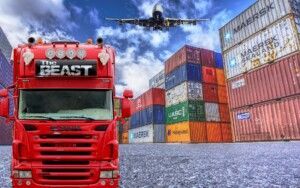How To Make Your Logistics More Sustainable

Climate change has been affecting the planet at an increasingly alarming rate. While countless factors are driving that, part of it is how companies operate. The logistics behind these firms can be wasteful and generate a lot of carbon dioxide.
While you might think that that’s the cost of doing business, it doesn’t have to be. You could take advantage of sustainable logistics. If this is an unfamiliar term to you, then you’ll want to know what it is and how it can benefit you.
Coupled with that, you should find out how to make your logistics more sustainable. Though you could choose certain fuel sources, such as Tri Gas & Oil , there are multiple other things that you can do.
But first, it’s worth looking at what sustainable logistics actually is.
What Is Sustainable Logistics?
It’s been estimated that the world’s population will grow significantly in the next few decades. That’ll lead to a steady, if not sharp, increase in demand for goods and services. That will have just as much of an increase on the environment, thanks to the logistics of many companies.
Unless supply chains are made more sustainable, this rise will lead to a larger impact on the environment. With that, climate change will affect people much more than it is now. Companies need to adapt their supply chains to minimize that impact on the environment.
The process of achieving that goal is what’s known as sustainable logistics.
Why Is It Important?
You might be wondering why sustainable logistics is important. A lot of this could be related to e-commerce, which has boomed over the past few years. More people ordering online has led to more deliveries being made.
That’s resulted in more of an environmental impact than ever, with changes showing no signs of slowing down. Making your logistics more sustainable dampens – if not outright removes – the impact that your company will have.
There are several other reasons why many companies, especially e-commerce ones, are trying to make their logistics more sustainable . The largest of these are:
- Customers focus more on a product’s or service’s sustainability before buying;
- More governmental mandates are coming in focusing on the issue;
- More employees are demanding that their employers are environmentally friendly.
With those in mind, it might be mandatory to reduce the environmental impact your company has. If it isn’t, then it might be in the years to come.
Tips For Making Your Logistics More Sustainable
Make Use Of Your Data
There’s a lot involved in logistics and the supply chain, meaning there’s a lot to manage. There’s also a lot of information being taken in, even if you’re not doing so intentionally. Drivers can tell you, for example, what times people are unlikely to be home for deliveries.
Factors like these, which require multiple trips for one delivery, affect your company’s carbon footprint. Using the data that comes in means that you can optimize your operations. That means putting in reporting and tracking tools, although that’s something many firms should do anyway.
With these, you can determine the best time to arrange deliveries, optimize routes, and much more. These will make your logistics network more sustainable. You can also optimize for profitability at the same time, should this match up with your sustainability goals.
Get Closer To Your Customers
If you’re based close to your customers, then you won’t need to travel too far to deliver to them. While that isn’t always an option, you could consider pop-up warehouses. These specifically target last-mile deliveries, which can often be the least environmentally friendly aspect of a delivery.
Pop-up warehouses minimize this, as you can make multiple local deliveries from the same warehouse. Not only does this make deliveries more sustainable, but customers don’t have to wait too long for a delivery. You can also be more flexible with your delivery schedule.
That makes it a win-win for everybody involved.
Optimize Your Sites
If your business has multiple sites, then it could have a large environmental impact. If you need to deliver between them regularly, then that will make the issue worse. Optimizing your workplaces and any deliveries between them should be a priority.
There are multiple areas that you can focus on, depending on your industry. Analyzing routes and delivery times should be your first step, as you can optimize for fuel consumption and other factors.
You should also look at the equipment you use. Could this be upgraded to make it more fuel-efficient? Will making changes streamline the production and delivery process? Are there any areas where you can cut down on carbon emissions?
Answering these questions and implementing potential solutions should be your first step in making your logistics more sustainable. You should see this as an ongoing process, as you can find more areas to improve the more you look.
Add IoT Devices For Minor Improvements
The Internet of Things (IoT) has made doing business much easier across multiple industries. That’s only when properly utilized, however. Depending on what industry you’re in, these can vary. There are several areas that the IoT can help you make your logistics more sustainable.
Many of these revolve around reducing fuel consumption. If a vehicle averages 80km per hour, for example, it could save on 10% of fuel. Making sure your tire pressure is optimal can also have an impact on your fuel consumption.
How to optimize these can vary depending on exact circumstances. Utilizing the IoT will help you track and analyze different areas, letting you optimize for sustainability. You should also save on money with these, especially when it comes to fuel costs.
Wrapping Up
There are multiple reasons why you should make your logistics more sustainable. These can revolve around increased sales and revenue, as potential customers will be more attracted to your company. The same can be said for potential employees, giving you greater access to a wider talent pool.
That’s without mentioning the environmental benefits that it will offer. While you might have to put an upfront investment to accomplish this, it’ll be worth it in the long term. Once you know how to make your logistics more sustainable.


